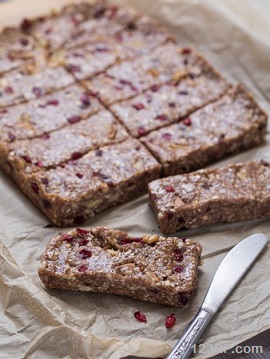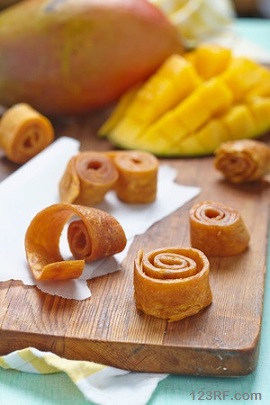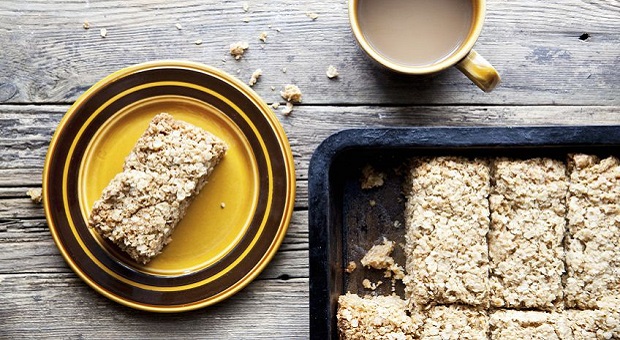If you’re a vegetarian, you may find searching for survival foods a bit difficult. Most articles focus on how to preserve meats and other standard animal-based foods as the primary means of obtaining protein and making food that’s easy to carry.
Fortunately, there are many options for survival foods for vegetarians; you just have to be a bit more creative and prepare ahead a bit more than your meat-eating counterparts.
Regardless of whether you’re a vegetarian, vegan or meat-eater, you still need to get the proper ratios of fats, proteins, carbs and micronutrients. For meat-eaters, this is going to come from mostly animal sources but there are plenty of options for you even if you don’t eat meat.
It is, of course, easier if you’re a lacto-ovo vegetarian. If so, you’re going to be able to get many of your nutrients from cheese, milk, eggs and foods made with those products. If you’re not, here are some great alternatives.
Coconut milk and oil
{adinserter backyardliberty}You can buy canned coconut milk that will store for years. It’s nutritious and will work for you in most recipes as a replacement for animal-sourced milk. You can also drink it straight but if you plan to do that, get the unsweetened type or else you’re going to have REALLY sweet milk to drink.
Coconut oil is great for everything from cooking to skin care so if you stockpile plenty of this, you’ll be golden (literally if you use it as a sunscreen).
It can also be used to make a type of vegetarian pemmican that uses nuts and berries instead of rendered animal fat and meat. Just grind up the nuts and berries and add in the coconut oil. Since it’s solid at temperatures below 72 degrees or so, it’ll hold your pemmican together nicely as long as it’s stored in a fairly cool place.
Granola Bars

Your nuts will be a source of fat and protein and the fruits and syrup/honey will provide carbohydrates and micronutrients.
The good thing about granola bars is that you’ll be able to pack them up to carry with you if need be. There will be no reason to count on other lightweight foods such as beef jerky to provide your nutrition.
Fresh and Canned Vegetables
These really are sort of no-brainers but they bear mentioning. Growing your own garden to produce your own canned goods or fresh veggies is a great way to fill your cellar with vegetarian-friendly nutritious foods.
Also, a good garden will make for good barter if and when SHTF. If you can’t grow your own food to can and want to preserve your own foods, hit the local farmer’s markets and consider joining a food co-op. You can choose what you want delivered in your basket every time you get an order and then you may can it yourself.
Fruit and Veggie Leather

Make a paste of cooked vegetables and fruits (a good rule of thumb is to use 1 part vegetables to 3 parts fruit if you want it to be sweeter and more palatable. You can also make straight vegetable leather and include spices for a quick meal on the go that’s both flavorful and nutritious.
Just cook your produce, use a food mill to reduce it to a paste, then use the fruit leather insert that comes with your dehydrator to dry the paste into a leather that will be about the consistency of a fruit roll-up.
Rice Milk
Now this is actually a viable way to make milk even if you don’t have access to a blender. Rice milk is extremely easy to use and can be used to drink or to bake or cook with.
Just cook your rice until its really tender, then drain it and grind it in your food mill. Add 4 cups of water for every one cup of milk, then add a dash of salt and a tablespoon of sugar if you want it sweet. You can also throw in some vanilla if you want it to taste even better. Oat milk can be made using basically the same process with oats, of course.
Almond Milk

In theory, I suppose you could use a mill to make the milk then strain it through a linen to catch the chunks. This would require a significant store of almonds, though.
Dried Foods
There are a ton of dried foods that meet the vegetarian lifestyle and can be stored long-term without any need for canning or processing. Dried fruits are one good source of vitamins.
Dried beans are probably going to be your main source of protein along with nut butters. Dried beans can be stored long-term in airtight containers as can rice. Pasta also stores well but pay attention to ingredients.
The bottom line is that there may come a point when you will be forced to eat something at least remotely animal-sourced such as cheese, butter or eggs but if you prepare properly, you can get along quite well without any animal products at all. There are plenty of survival foods for vegetarians out there; you just need to prepare a bit in advance and have a good stockpile of staple foods.
If you have any other good suggestions for vegetarian survival foods, please feel free to share them in the comments section below.
Interested in finding the best survival food for your family? CLICK HERE to find out more!
This article has been written by Theresa Crouse for Survivopedia.








Pingback:7 Basic Survival Foods For Vegetarians - Survivalot | October 7, 2015
|
Pingback:7 Basic Survival Foods For Vegetarians - Survival By Preparedness | October 7, 2015
|
Pingback:7 Basic Survival Foods For Vegetarians | Freedom Newz | October 7, 2015
|
laura m. | October 8, 2015
|
I would eat way less meat if I didn’t have to cook it for hubby, I have stocked up on canned salmon and sardines, canned chicken and canned veg and nuts, but if folks get hungry enough they will have to switch to eating some form of meat. I have stocked up on avocado, safflower and almond oils along with olive oil. I think home made granola bars is a great idea, add choice of nuts, store bought ones aren’t that good.
Pingback:Here’s What You Need To Know About Containers - Survival By Preparedness | October 12, 2015
|
RANGER | October 14, 2015
|
i know i cite this book a lot, but there is a lot of life saving
information therein.
i grew up on-again off-again Vegetarian with Parents growing huge Gardens, Mom, canning, drying, Preserving etc. This Hippie kid got spoiled!
(Love my Wild Game though)!
Find this Chapter an interesting read:
Chapter 9. Food
“One good expedient way to prevent or cure scurvy is to eat sprouted seeds not just the sprouts”.
http://www.oism.org/nwss/s73p920.htm
Nice Article, Thanks Theresa!
RANGER
Everett stockhausen | August 15, 2016
|
My son will be sent to Maine in the winter for a 3 week military survival course. Others who have experienced this say that the participants will lose an average of 20 pounds during that time. He can ill afford to lose 20 pounds, so I was wondering if you knew a good source for carbs that can be found in abundance in the winter? I think he is fairly good at locating small game for protein. Any suggestions will be greatly appreciated!
Best regards,
Everett
Pingback:Survival Foods To Stockpile For Diabeticsdisasterdefense.us | disasterdefense.us | October 14, 2015
|
Pingback:Survival Foods To Stockpile For Diabetics | Survival skills, survival guns, survival guide | October 19, 2015
|
Pingback:Survival Foods To Stockpile For Diabetics | October 29, 2015
|
Pingback:6 Top Foods That Slowly Kill Your Heart | Survival skills, survival guns, survival guide | December 3, 2015
|
Pingback:10 Trees A Prepper Needs For Food and Health | Survivopedia | March 14, 2016
|
Pingback:10 Trees A Prepper Needs For Food And Health | NewZSentinel | March 19, 2016
|
Pingback:Basic Survival Food From Your Garden: Beans | Survivopedia | June 15, 2016
|
Pingback:Basic Survival Food From Your Garden: Beans | Prepper's Survival Homestead | June 15, 2016
|
Pingback:Basic Survival Food From Your Garden: Beans | | disasterdefense.us | June 18, 2016
|
Pingback:13 Ways To Fight Aging Naturally | Prepper's Survival Homestead | June 26, 2016
|
Pingback:The Gluten Free Survival Stockpile | Survivopedia | July 27, 2017
|
Pingback:Non-Meat Protein Sources For Your Survival Stockpile | Survivopedia | December 3, 2017
|
Pingback:13 Ways To Fight Aging Naturally | Survivopedia | July 17, 2018
|
Pingback:Survival Foods To Stockpile For Diabetics | Survivopedia | December 3, 2018
|